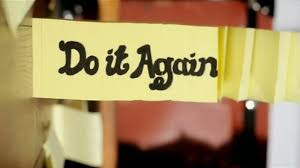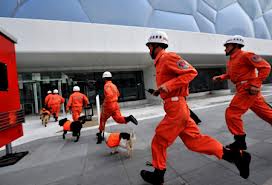 Sometimes even an obviouslyself-serving study by a corporation can be helpful. The e-book “The9 Levels of Enterprise Work Hell” fits into this category. The Utahcompany behind this e-book, AtTask, sells work management tools forbusiness teams, and much of the advice contained in the bookinvolves getting the right work management tools for businessteams.
Sometimes even an obviouslyself-serving study by a corporation can be helpful. The e-book “The9 Levels of Enterprise Work Hell” fits into this category. The Utahcompany behind this e-book, AtTask, sells work management tools forbusiness teams, and much of the advice contained in the bookinvolves getting the right work management tools for businessteams.
Yet the e-book is cleverly designed and written, with lots ofspooky graphics and gothic images and typeface. The data wasderived from 1,000 survey responses, so it's not a bad sample,either. And, most of all, AtTask has found a fun way to deliverserious information about those things that irritate peoplemost.
|Also ofInterest:
In-Depth:CU Times on Employee Engagement
UsingPoets and Hayrides to Advance Employee Engagement
CUAssumptions Challenged: CU Water Cooler
Fast Company also pulled together a fine synopsis on this,interviewing AtTask Chief Marketing Officer Bryan Nielson,whose quotes are included here. Here are AtTask's workplaceequivalents of Dante's levels (or, to be accurate, circles) ofhell:
|Read more: Tool hell …
|| 1. Tool hell
1. Tool hell
The average person uses 13 different tools or methods to managetheir day, Nielson said. That's way too many, and leads to workersspending more time trying to remember how to use existing tools,learn how to use new ones and get the old and new ones to worktogether, rather than actually using them to do importantwork.
|“All that toggling back and forth creates challenges andfragments work experience,” he said.
|Nielson said the fix is to consolidate tools, using one or twothat are easily accessible by everyone.
|Read more: Rework hell …
|| 2. Rework hell
2. Rework hell
Workers spend 14% of their day duplicating information andforwarding emails and phone calls. A quarter to 40% of projectbudgets are wasted as a result of rework, Nielson said.
|“The cause for this is disconnect; workers aren't getting theright information from those who request the work,” he said.
|Part of the problem is that the work, and its outcomes, were notclearly defined before the tasks began. Before a new request istaken, take plenty of time to gather information upfront, Nielsonsaid, and get stakeholders involved at every stage by managingfeedback and approvals in a central location.
|Read more: Fire drill hell …
|| 3. Fire drill hell
3. Fire drill hell
In this level of chaos and insanity, fires are bursting out allover the place (oftentimes strategically set by those who use afire to cover their lack of productivity). No one has a chance tostand back and consider how the work should be done or what theoutcomes of the work should be.
|The average corporation spends about half its time in fire-drillmode, Nielson said. To eliminate this type of work hell, don'tstart by pretending fires aren't breaking out or that you canimmediately stop them.
|Instead, acknowledge their existence by building time inproject schedules for them. That way, they are part of thetimeline, not the disrupter of timelines. Then, start to fireproofyour workplace by improving communication.
|“Encourage workers to give feedback on requests such as, 'I cantake this urgent project, but it will cause these four other thingsto slip. Are you okay with that?'” Nielson said.
|Read more: Silo hell …
|| 4. Silo hell
4. Silo hell
More than half of workers say departmentally “siloed”information is their top challenge in managing data, Nielson said.People often create their own silos intentionally. Everyone isusing different systems and solutions, no one is smoothly sharinginformation, and transparency is nil. Teams don't talk and don'twork together.
|“The problem is not having complete alignment,” Nielsonsaid.
|His solutions: eliminate needless formalities that throw upobstacles between people and departments, such as going throughproper channels. Encourage collaboration, using such techniques asa new office layout, shifting of job responsibilities, rearrangingreporting channels. Diversify project teams and organize staffmeetings by project instead of department.
|Read more: Reporting hell …
|| 5. Reporting hell
5. Reporting hell
Old data isn't very useful except for comparison's sake. But howoften does your data need to be updated? When is data out of date,and when is an update not really very useful?
|These are other questions are raised in reporting hell, asdirect reports send in mounds of numbers and analyses in differentformats, at different times, and with little thought to whether thelatest report matters to the enterprise.
|Managers gather information for meetings and to justify theirjobs, Nielson said, but the collection method is often outdated.Instead, he said companies should create a communication plan thatwill identify who needs to get updates, what information they need,when they need it, where the data will be stored and how it will bedistributed. Then, create a process in collaboration with teammembers that automatically distributes information to the rightpeople.
|Read more: Meeting hell …
|| 6. Meeting hell
6. Meeting hell
At the enterprise level, all meetings cannot be eliminated. But,Nielson said, an awful lot of them can be, thus freeing you andyour workers from “the prison of the working dead.”
|“Fifty percent of meetings are considered a waste of time, and74% of workers do other work while in meetings,” he said. That'sbecause most meetings aren't collaboration meetings, they're statusupdates.”
|Eliminate status meetings and review meetings, he advised. Thesecan be handled asynchronously with a robust work management systemto which everyone has access.
|Nielson said never schedule any other kind of meeting withoutfirst asking, “Is this meeting really necessary? Is there a fasterway to get information to and from people?” If the meeting isnecessary, he said, clearly define the purpose beforehand soparticipants can prepare.
|Read more: Interruption hell…
|| 7. Interruption hell
7. Interruption hell
Nielson says about 50% of the average worker's day is consumedby interruptions, of which 80% have no value. These can range fromsomeone dropping by a workstation with a quick request, to emailswith random and unapproved work requests, to text messages,instant messages and sticky notes that mysteriously appear stuck ona computer screen during a worker's break.
|Like the fire drill, you'll never eliminate all interruptions,Nielson said. But you can reduce the amount you get each day.
|Categorize the common types of disruptions you get each day andplan for them, he said. Set up a specific process for makingrequests that allows workers to check their inbox at set timesduring the day or week. This can be an online work management tool,or something as simple as a paper tray or dedicated email address.These assignments should be approved and prioritized.
|And until everyone gets the message, don't take requests in anyother way, and do not suffer non-essential interruptions withoutpointing them out to the perp.
|Read more: Email hell …
|| 8. Email hell
8. Email hell
This one, Nielson said, gets hellish really fast, but can beremedied fairly easily.
|Most workers say they feel overwhelmed by the welter of emailsthat flood into their inboxes every working day. They spend so muchtime managing email that they don't get any serious work done.
|“Email is overwhelming organizations,” he said. “We get hundredseach day. It's impossible to get through them all, but we'reexpected to. We end up doing email at all hours of the day.”
|The solution: break everyone's addiction to email as the singlesource for communicating everything from meeting time updates tothe location of the company picnic. Remove its status as amanagement, collaboration status update, feedback anddocument-sharing tool, Nielson said.
|Use a project management tool instead. This will significantlydecrease the amount of email you receive, and put communicationwithin the proper context.
|Read more: Collaboration hell …
|| 9. Collaborationhell
9. Collaborationhell
What kills collaboration is one-on-one communication between twoteam members that leaves everyone else out. Or everyone not on thesystem collaboration platform, or never collaborating in the samephysical place.
|The solution is to centralize correspondence, Nielson said,giving the whole team visibility into each other's work andfeedback.
|“Chat or instant messengers are great for real-time, but thoseconversations are lost when the window is closed,” Nielson said.“True work collaboration needs to be documented, visible and easyto track.”
|When the project demands true collaboration, the collaboratorsneed to be inputting and outputting from the same work processtool. When all parties are talking to one another, the work getsdone right. When the pieces and players are scattered, he said,collaboration fail happens.
Complete your profile to continue reading and get FREE access to CUTimes.com, part of your ALM digital membership.
Your access to unlimited CUTimes.com content isn’t changing.
Once you are an ALM digital member, you’ll receive:
- Critical CUTimes.com information including comprehensive product and service provider listings via the Marketplace Directory, CU Careers, resources from industry leaders, webcasts, and breaking news, analysis and more with our informative Newsletters.
- Exclusive discounts on ALM and CU Times events.
- Access to other award-winning ALM websites including Law.com and GlobeSt.com.
Already have an account? Sign In
© 2024 ALM Global, LLC, All Rights Reserved. Request academic re-use from www.copyright.com. All other uses, submit a request to [email protected]. For more information visit Asset & Logo Licensing.









